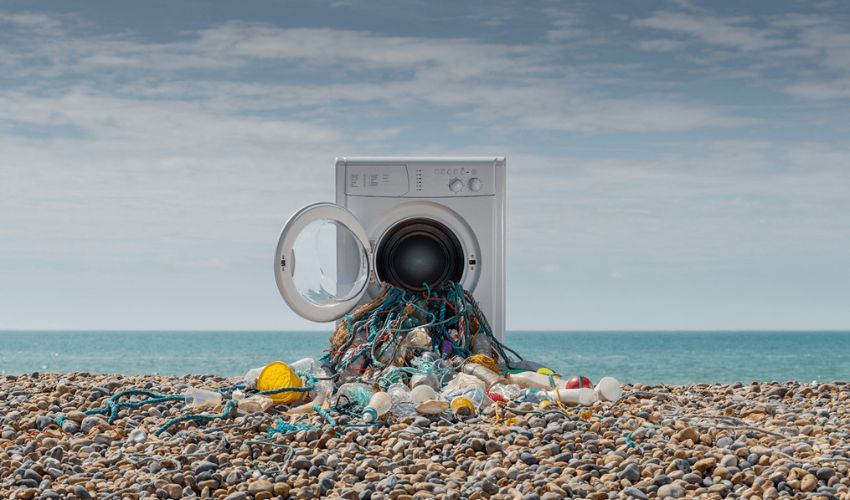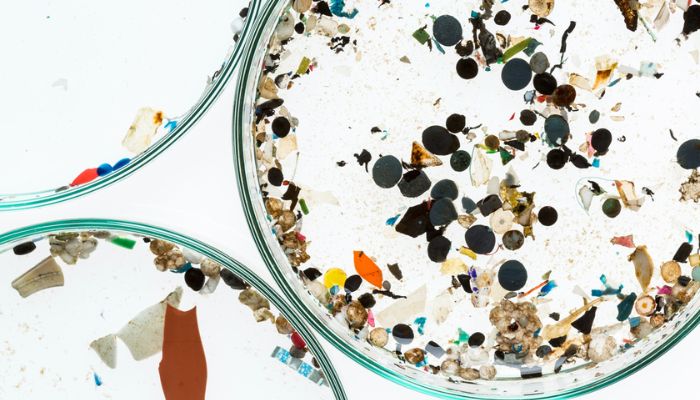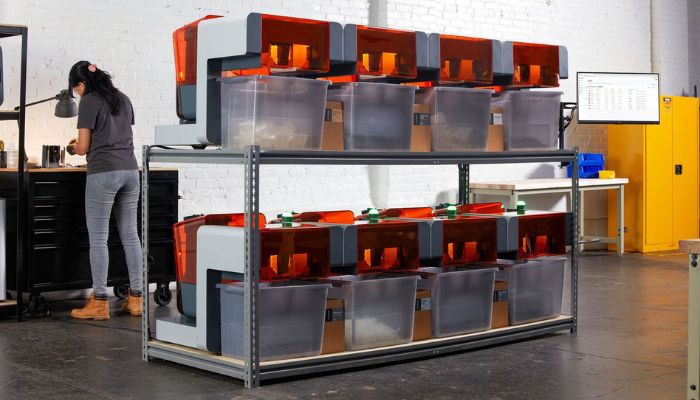Cleanr Is Creating Microplastic Filters for Washing Machines Using 3D Printing

Currently, the world is facing a number of different climate crises. For example, scientists are looking for solutions not only for global warming but also extinction of species, water shortages and food security. Throughout all of these, one of the hardest to address as well as the most widespread is undoubtedly microplastic pollution. Luckily, one company is looking for a solution to diminish one of the major sources of microplastic production. CLEANR is designing microplastic-filtering solutions for use in washing machines and they are using 3D printing to do so.
Defined by the National Oceanic and Atmospheric Administration (NOAA) as plastic debris that is less than five millimeters in length, microplastics are becoming a huge issue in lakes, rivers and oceans. In fact, they are so abundant that research shows that they cover up to 88% of the ocean’s surface and can be found anywhere from the beaches of the Arctic and Antarctic to even the summit of Mount Everest and the bottom of the Mariana Trench. And this is expected to only get worse, even doubling, by 2050. As such, finding solutions to this issue is becoming of increasing importance.

Microplastics often come from clothing, such as these found in German rivers by Greenpeace (photo credits: Fred Dott / Greenpeace)
Enter CLEANR. This young start-up from Cleveland, Ohio is developing filtration systems for washing machines, a leading cause of microplastic pollution. As clothing is one of the largest sources for microplastics, washing machines alone are responsible for 35% of the microplastic that enters the environment. Indeed, the problem is so widespread that countries are already starting to pass laws to include microplastic-filtration solutions. For example, from January 2025 all French washing machines will need to include one and state legislators in California and Oregon States are currently working on similar proposals. Thankfully, with CLEANR’s filter, it would be possible to filter up to 99% of microplastics before they enter the environment, down to an incredible level of 10 microns.
Not only that, but additive manufacturing is playing a key role in the development of their solutions. Chip Miller, co-founder and chief operating officer of CLEANR, further explains, “3D printing technology plays a pivotal role in how we’re helping washing machine manufacturers address complex microplastic-filtering specifications, testing standards, space constraints, and cost challenges as they move quickly to address new regulations.”
Using 3D Printing to Develop New Solutions
But how exactly is the company using 3D printing? Well, it seems that CLEANR is turning to additive manufacturing specifically for its rapid prototyping capabilities, allowing them to accelerate the introduction of their microplastic-filtering solutions. Furthermore, a recent press release from the company mentions that they are also using the technology for customization, specifically as a way to fit each solution to a specific manufacturer.

CLEANR turned to Formlabs’ Automation Ecosystem to create their filters (photo credits: Formlabs)
That being said, in terms of which 3D printing technology exactly is used, the company has mostly stayed mum. However, they have announced that they have been chosen as early adopters for Formlabs’ Automation Ecosystem, announced just this past January. The Automation Ecosystem was developed to enable automation of large 3D printer fleets, specifically with enabling expansion of the Form 3+, Form 3B+, Form 3L, and Form 3BL. Knowing that, all these printers use SLA, it is likely that this is the 3D printing technology used.
CLEANR co-founder and chief technology officer David Dillman concludes, “Technology innovation is crucial in the race to eliminate microplastics from our oceans, food supplies and drinking water. Having early access to Formlabs’ advanced 3D printing capabilities will help us maintain the lead position in microplastics filtration and accelerate our expansion into in-home water filters, dishwashers, dryers, industrial laundry, and beyond.” You can find out more in the press release HERE.
What do you think of this use of SLA 3D printing to create filtration systems for microplastics? Let us know in a comment below or onour Facebook, Twitter and LinkedIn pages! Sign up for our free weekly Newsletter here, the latest 3D printing news straight to your inbox!
*Cover Photo Credits: Plastic Soup Foundation






